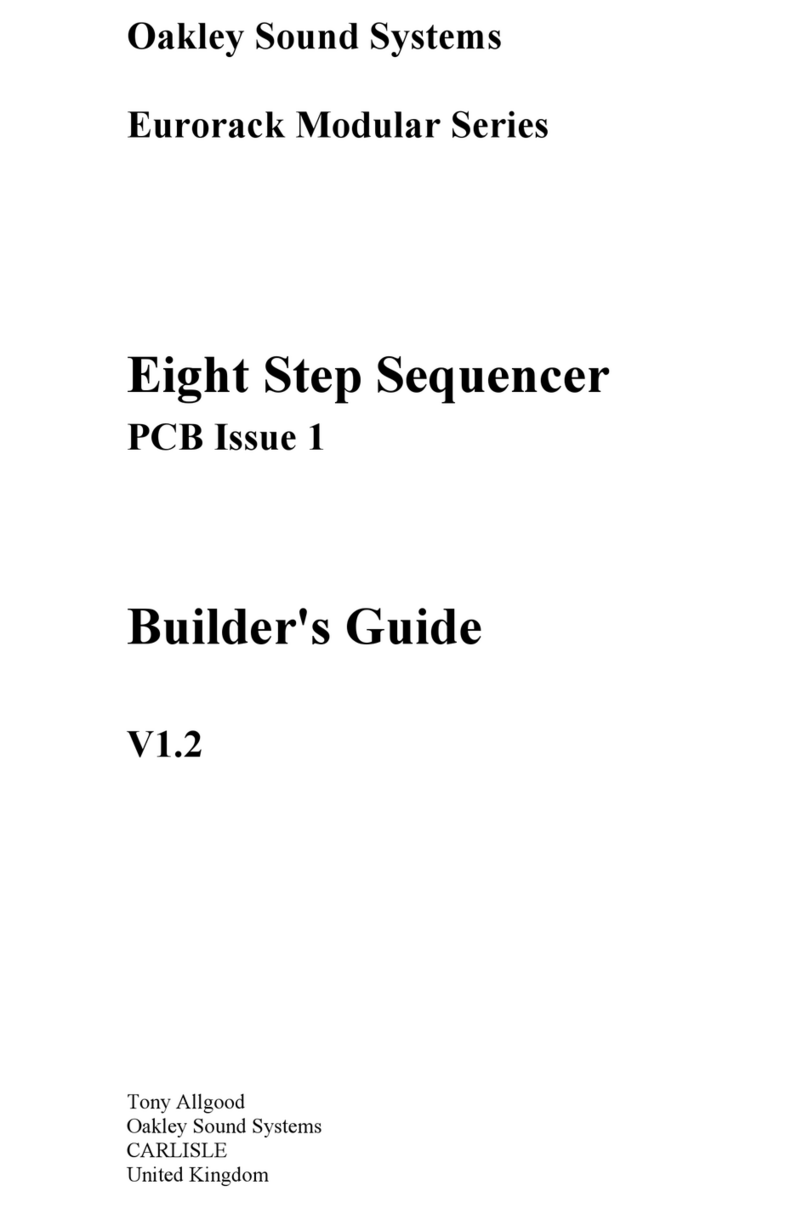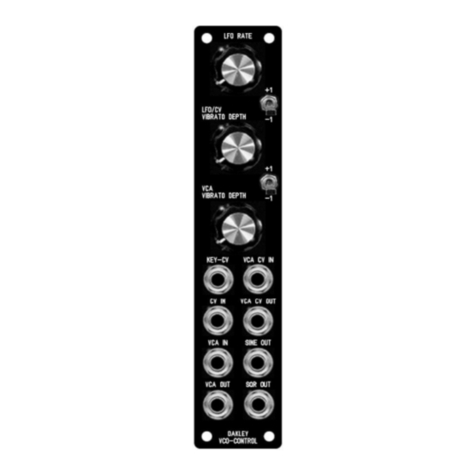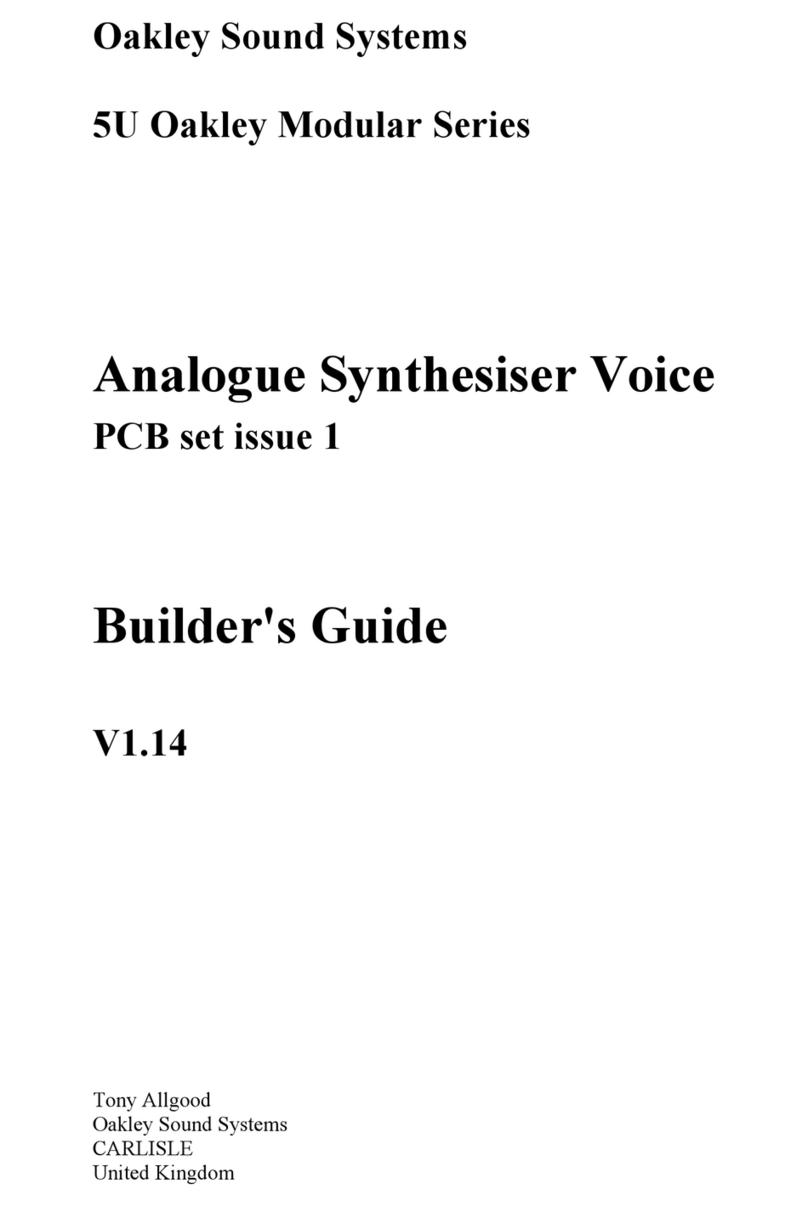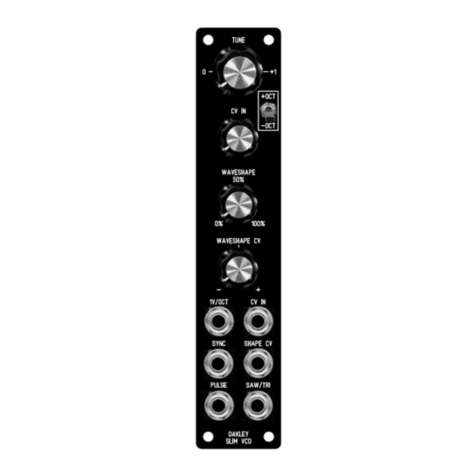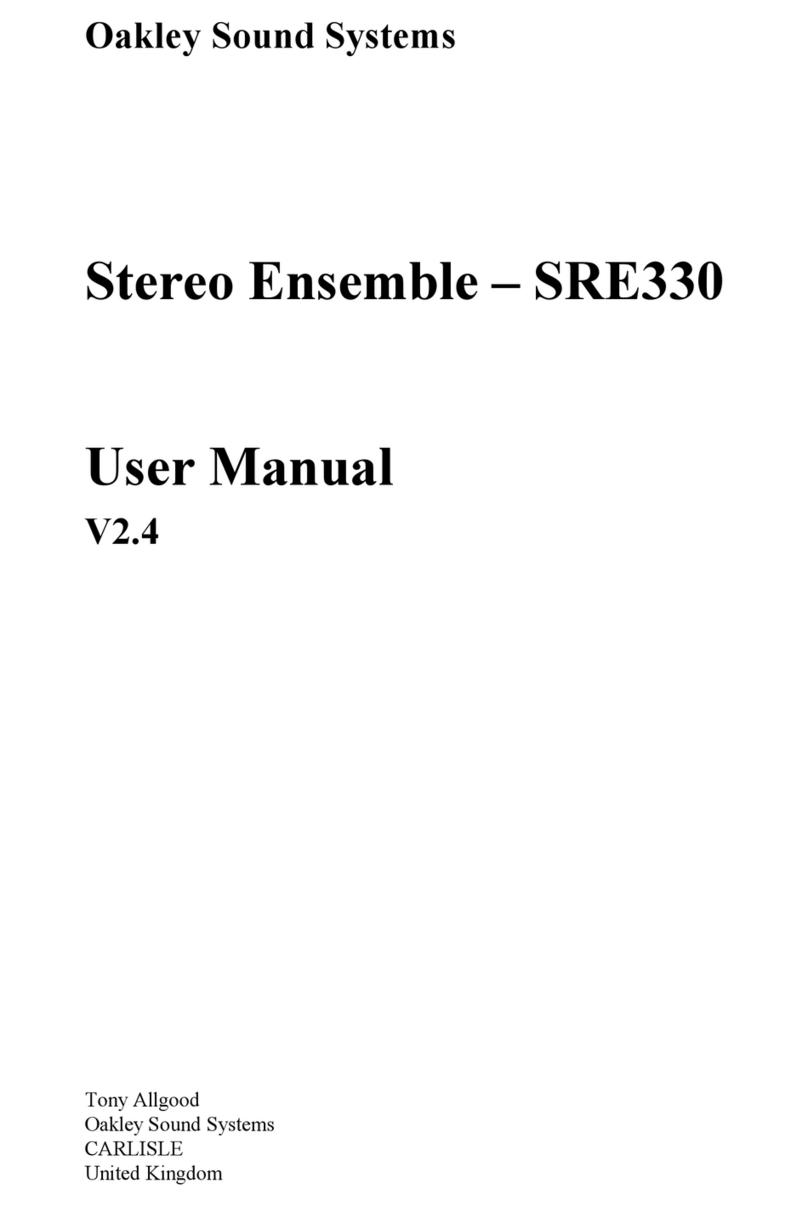Parts List
I strongly advise you to read the 'Parts Information' section above before you place any order
for parts.
For general information regarding where to get parts and suggested part numbers please see
our useful Parts uide at the project webpage or http://www.oakleysound.com/parts.pdf.
A quick note on European part descriptions. To prevent loss of the small ‘.’as the decimal
point, a convention of inserting the unit in its place is used. eg. 4R7 is a 4.7 ohm, 4K7 is a
4700 ohm resistor, 6n8 is a 6.8 nF capacitor.
Resistors
All resistors 1/4W 5% unless stated.
10R R60
22R R65, R70
100R R88, R89, R113, R14, R61, R42
220R R1,R9,R10
1K R4, R117, R104, R84, R31, R64
1K5 R106
1K8 1% metal film R85
2K2 R12, R29, R109, R112, R107, R110, R63, R44, R43,
R94, R59, R58, R80
2K2 1% metal film R91
3K3 1% metal film R40
3K9 1% metal film R50
4K7 R119
5K1 1% metal film R38, R72
6K8 R74
10K R6, R13, R7, R116, R114, R100, R51, R97, R78, R77, R79,
R57, R46, R83, R62, R67, R53 ,R52 ,R69, R68, R5
10K R118 - only if not fitting BA662 in U15.
10K 1% metal film R71
22K R95, R11, R92, R93, R54, R41, R73, R66
47K 1% metal film R2, R96, R102, R39
51K 1% metal film R105
68K R56
100K 1% metal film R28, R8, R33, R108, R32, R35, R101, R103, R99, R115, R36,
R37, R90, R30, R55, R75, R76, R82, R49, R47, R81, R120
100K 0.1% metal film R16, R18, R20, R22, R24
180K R3
200K 0.1% metal film R15, R21, R25, R26, R23, R19, R17
220K 1% metal film R27
220K R45, R98, R48, R86
1M R111, R34
1M5 R87
8
